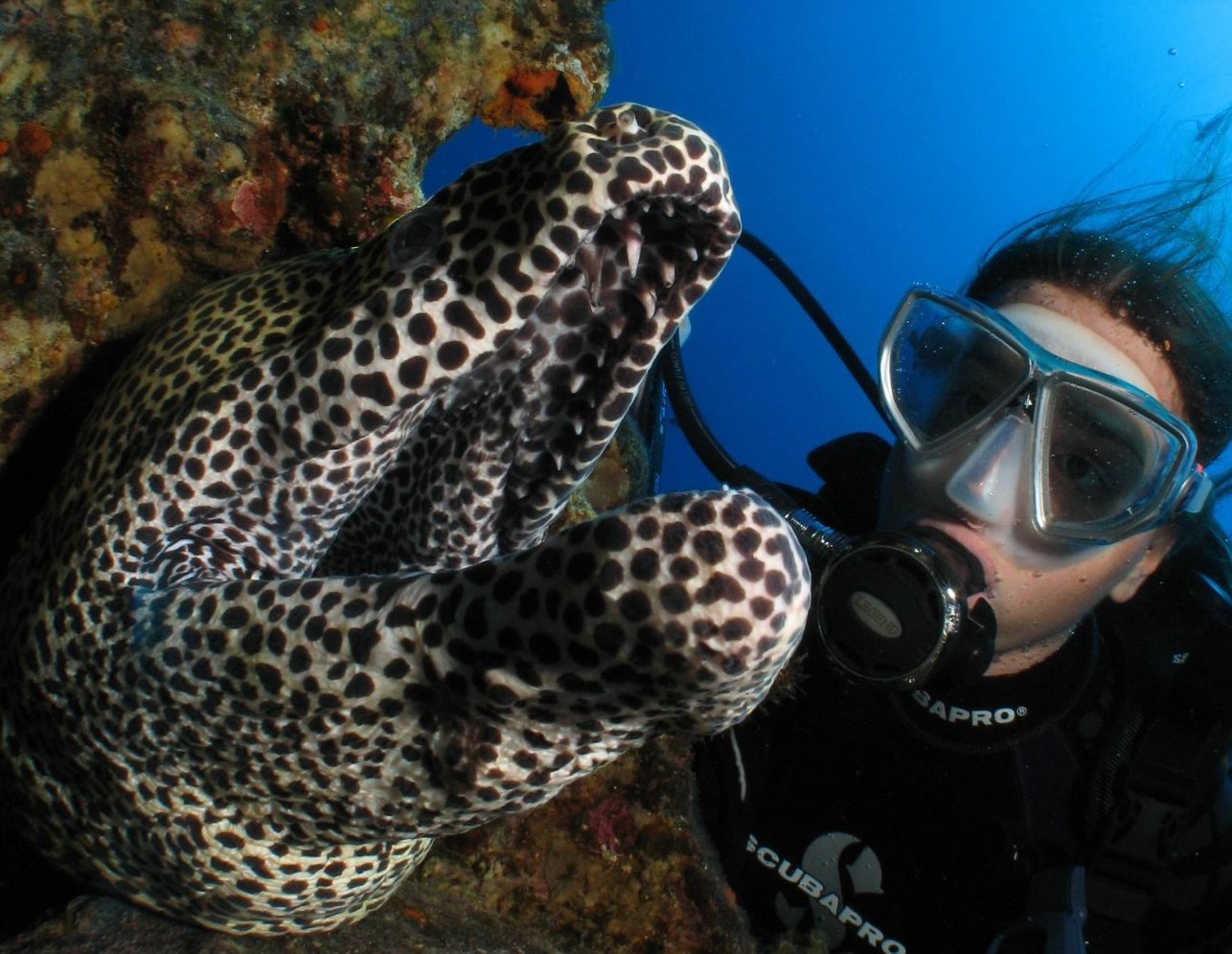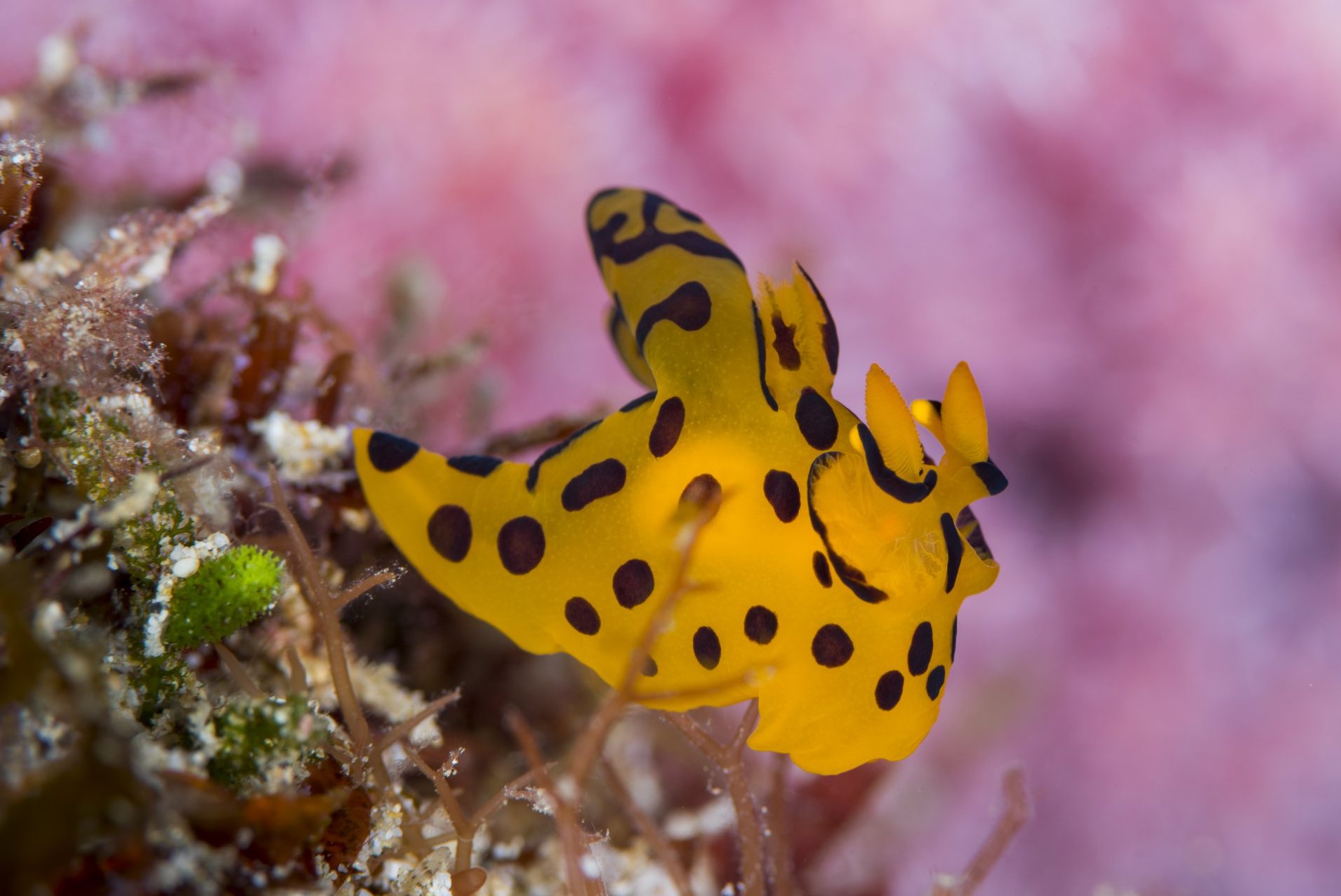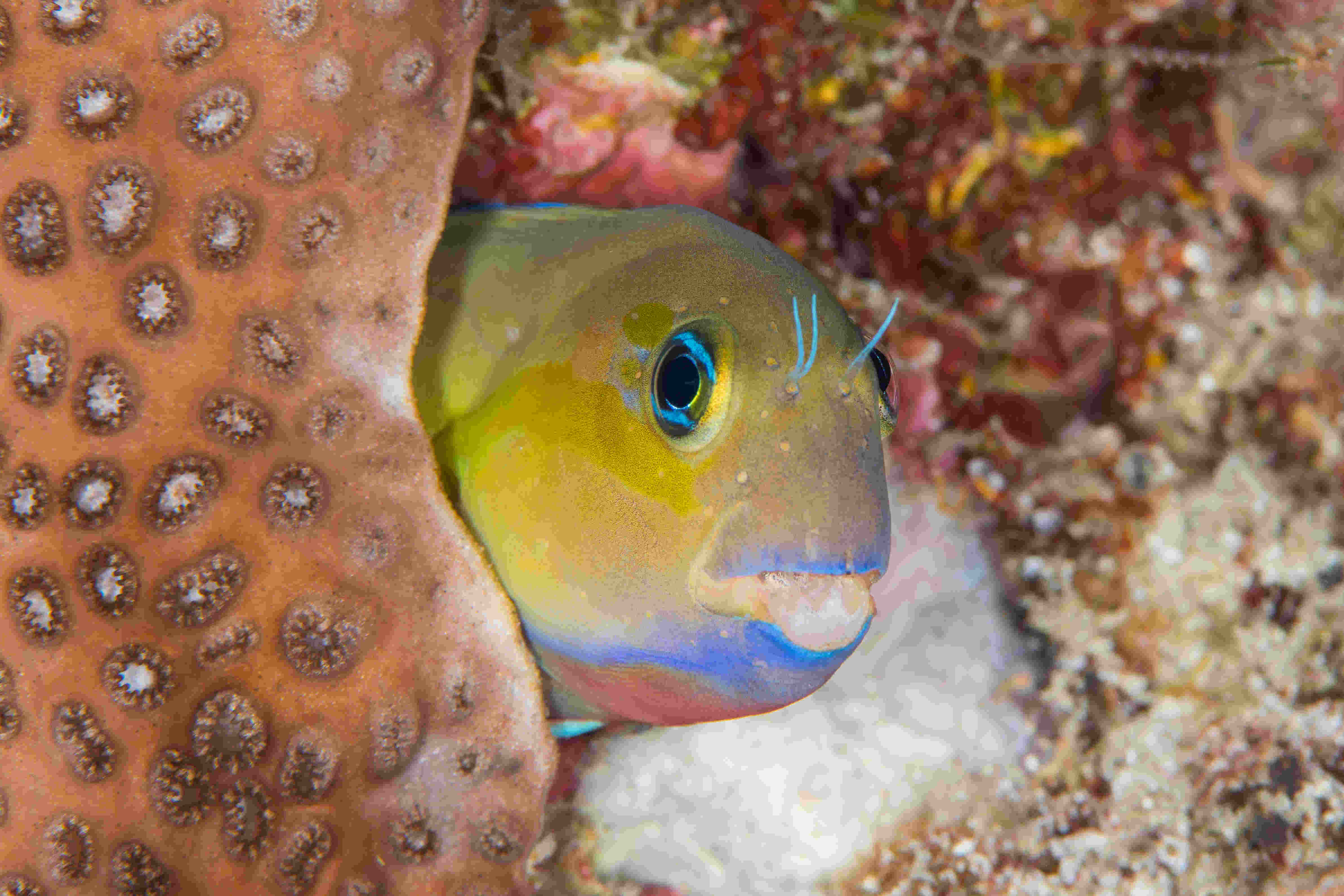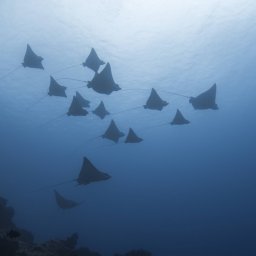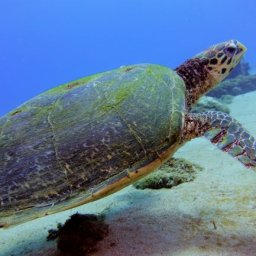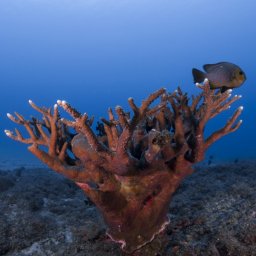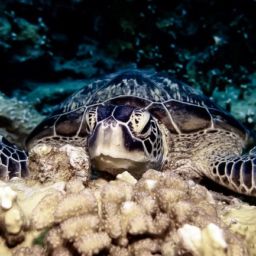Snake Reef
Snake reef or “Rempart Serpent” as the locals call it is one if not the most diverse spots we can offer. Snake reef is often referred to as Fish and photographer’s paradise. Snake reef lies down at around 27m and is (unfortunately) one of our farthermost spots and requires good sea conditions. However, if we’re able to go there you will most likely be rewarded with near perfect visibility and a lot of marine life, especially if we got the reef to ourself.
On a very small area of around 400-500m2 we can find a large variety of fish. The bigger ones includes members of the scorpionfish (Scorpaenidae) family including lionfish (Pterois) and the leaf fish (Taenianotus triacanthus), stonefishes (Synaceia), moray eels (Muraenidae) and sometimes stingrays (Dasyatidae). There are also a lot of smaller creatures including sea slugs (Opistabranchia) such as nudibranches (Nudibranchia) and many crustaceans such as shrimps and crabs, as well as smaller reef fish of different families. If you look away from the reef towards the sand-bottom you will often see large numbers of garden eels (Heterocongrinae).
Although it is a quite small reef you will have so much to see that you probably won’t have to swim very far. On one our dives I was showing a customer and anemone I spotted with several clownfish and three spot dascyllus. On a closer look, I noticed to small crabs within the anemone as well and 2 cleaner shrimp joined us as well. While our customer was trying to take pictures of this a neighboring moray eel stuck her head out of her whole to see what was going on in front of her “door”, inspecting his BCD. All this in an area less than half a square meter!
Snake reef is also a small mystery, especially for me as Marine Biologist. Although there are several rock formations cluttered on the otherwise sandy bottom only snake reef features marine life in such diversity and abundance while on other rock clusters and that area you won’t find half as much life. It is known that hard structures attract marine life and can lead to observed numbers of fishes, but then other areas should exhibit similar diversity and abundance. As this is clearly not the case here there must be another reason for this. A possible explanation might be submarine freshwater springs which are supposed to be in close vicinity of snake reef. These submarine springs bring nutrients from the central part of the island directly into the sea. Some scientists think this local source of nutrients can increase abundance and diversity in the area of these springs and therefore an explanation for all the fish life of snake reef. These springs were the topics of my Masters research and I hope to find out more about snake reef during my internship.
